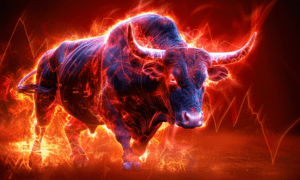Silicon Valley, now synonymous with cutting-edge technology and entrepreneurship, didn’t emerge overnight as the world’s tech hub. Silicon Valley’s global prominence stems from decades of vision and hard work by individuals who built today’s high-tech ecosystem. This article explores the lives of key figures who shaped its history and sparked a technological revolution.
Frederick Terman: The Father of Silicon Valley
Frederick Terman was a professor at Stanford University and later the dean of its engineering school. His forward-thinking approach set the stage for Silicon Valley’s emergence as a tech hub.
Terman was a strong advocate of building connections between academia and industry. As early as the 1930s, he encouraged his students to venture into entrepreneurship rather than follow the traditional path of working in academia or large corporations. This mindset was unconventional at the time, but Terman’s mentorship fostered a culture of innovation and entrepreneurial spirit at Stanford.
One of his key contributions was encouraging his students, William Hewlett and David Packard, to start Hewlett-Packard (HP) in 1939, even providing them with startup capital and his garage. He also helped establish Stanford Industrial Park in the 1950s, attracting high-tech companies and fostering innovation.
William Shockley: Inventor of the Transistor
William Shockley, a brilliant physicist, co-invented the transistor a revolutionary invention that transformed the electronics industry by replacing bulky vacuum tubes. The transistor made it possible to create smaller, faster, and more efficient electronic devices like radios, televisions, and, eventually, computers.
In 1956, Shockley left Bell Labs and moved back to his hometown of Palo Alto, where he founded Shockley Semiconductor Laboratory. Though the company itself didn’t last long, it marked a turning point for Silicon Valley. Shockley’s move attracted a wave of talented engineers and scientists to the area, including a group known as the “Traitorous Eight,” who would go on to leave his firm and make their own mark on the tech world.
Despite his genius as an inventor, Shockley’s difficult management style hindered his company’s success. Still, his contributions to the development of the transistor and his role in bringing top engineering talent to the region make him a critical figure in Silicon Valley’s history.
The Traitorous Eight: Semiconductor Pioneers
In 1957, a group of engineers known as the “Traitorous Eight” left Shockley Semiconductor Laboratory, frustrated with Shockley’s leadership. These engineers Robert Noyce, Gordon Moore, Julius Blank, Victor Grinich, Jean Hoerni, Eugene Kleiner, Jay Last, and Sheldon Roberts went on to form Fairchild Semiconductor, a company that played a central role in Silicon Valley’s growth.
Fairchild became a hotbed for innovation, producing the first commercially viable integrated circuit (IC). This breakthrough paved the way for the development of modern computers, smartphones, and countless other digital technologies. Fairchild also spurred a wave of entrepreneurial activity, as many of its engineers eventually started their own companies. This phenomenon, known as the “Fairchild spin-off,” led to the creation of industry giants like Intel, further solidifying Silicon Valley’s position as the world’s leading center for technology.
Robert Noyce: The Mayor of Silicon Valley
Robert Noyce, one of the “Traitorous Eight,” earned the nickname “The Mayor of Silicon Valley” for his key role in fostering the region’s innovative and collaborative culture. Along with Jack Kilby, Noyce co-invented the integrated circuit, which became the foundation for the modern semiconductor industry.
In 1968, Noyce co-founded Intel with Gordon Moore.
At Intel, they developed the first commercially viable microprocessor, now the brain of computers and many electronic devices. Noyce’s collaborative leadership and flat organizational structure helped drive Intel’s success, setting a model for Silicon Valley startups.
Gordon Moore: The Man Behind Moore’s Law.
Gordon Moore, co-founder of Fairchild Semiconductor and Intel, is famous for predicting that transistor counts on microchips would double roughly every two years, a principle called “Moore’s Law.” This prediction has driven the semiconductor industry’s rapid growth and advances in computing power.
Moore’s work at Fairchild and Intel was crucial to the tech industry’s foundation, and his prediction still influences the future of technology.
Steve Jobs and Steve Wozniak: The Personal Computer Revolution
No account of Silicon Valley’s history would be complete without mentioning Steve Jobs and Steve Wozniak, co-founders of Apple Inc. Their innovations in the late 1970s and early 1980s brought personal computing to the masses and fundamentally changed how people interact with technology.
Wozniak was the engineering genius behind the Apple I and Apple II, two of the first commercially successful personal computers. Jobs, with his visionary mindset and marketing savvy, recognized the potential to turn personal computers into consumer-friendly devices. Together, they revolutionized the computer industry and transformed Apple into one of the world’s most successful companies.
Their influence extended far beyond Apple. Apple’s success ignited innovation in tech, driving rapid growth in personal computing and the rise of giants like Microsoft.
Conclusion
Silicon Valley’s rise from a quiet agricultural area to a global tech hub reflects the vision and drive of pioneers like Frederick Terman, William Shockley, Robert Noyce, and Steve Jobs. Their groundbreaking contributions laid the foundation for a culture of innovation that defines the region today.

































